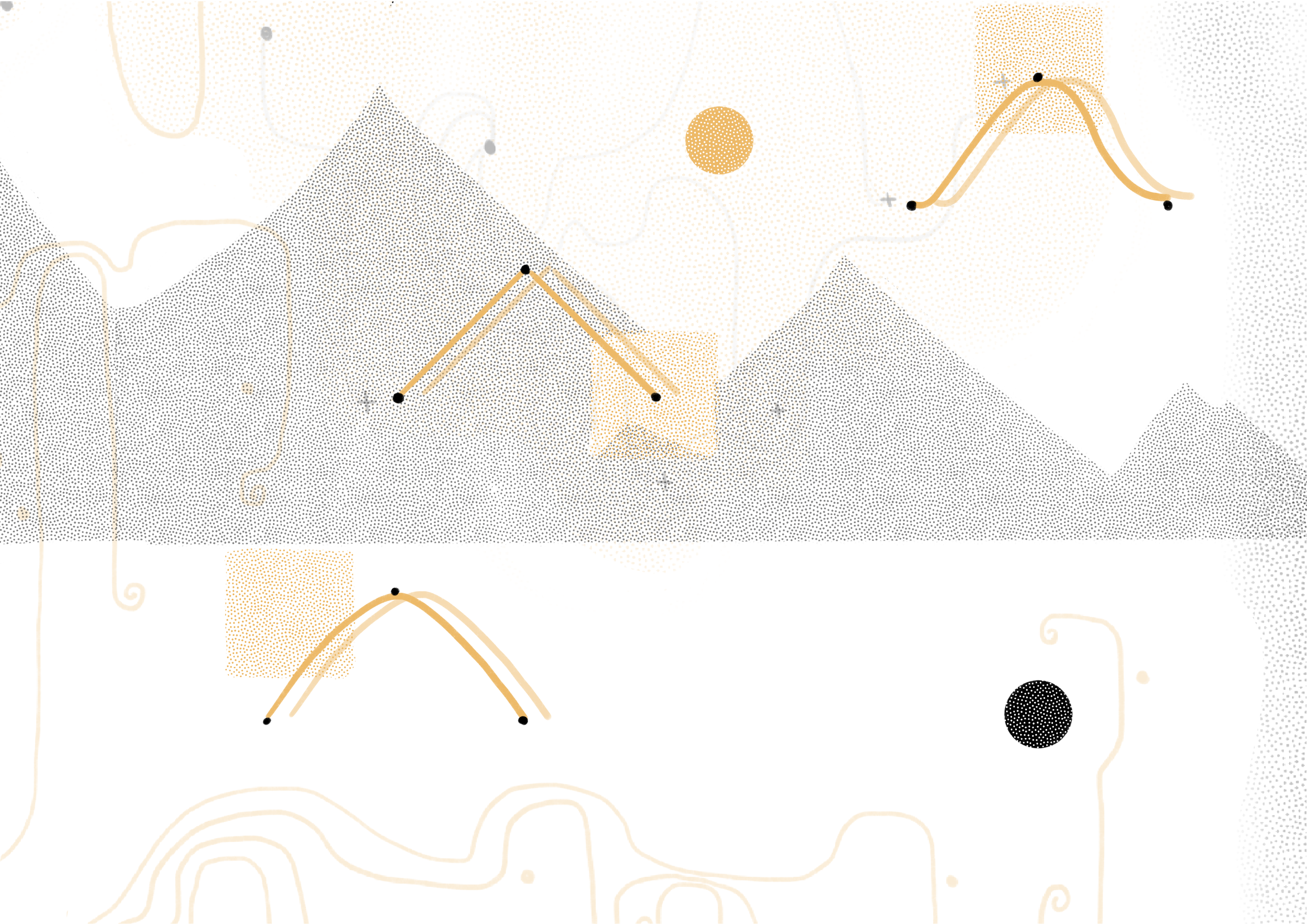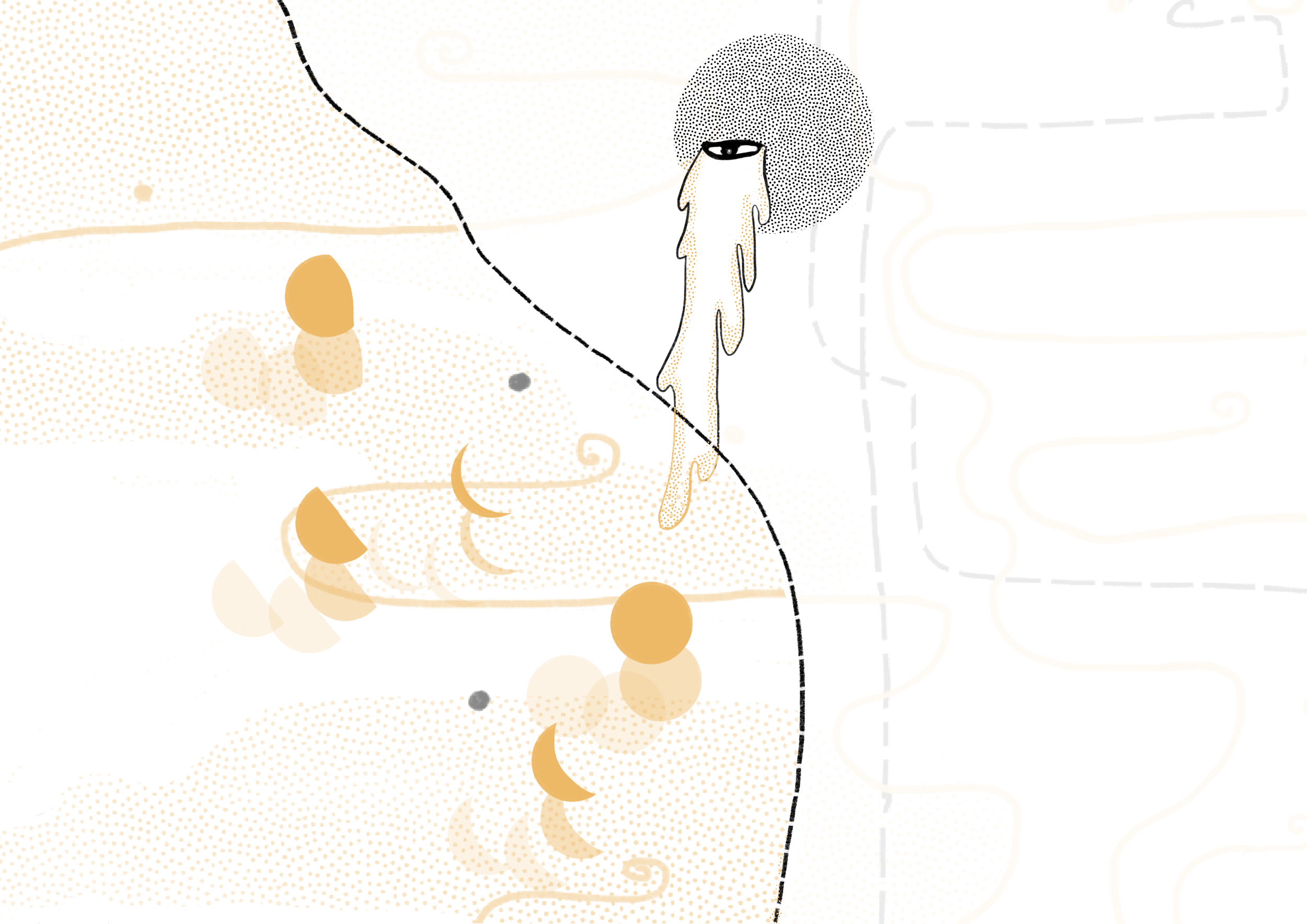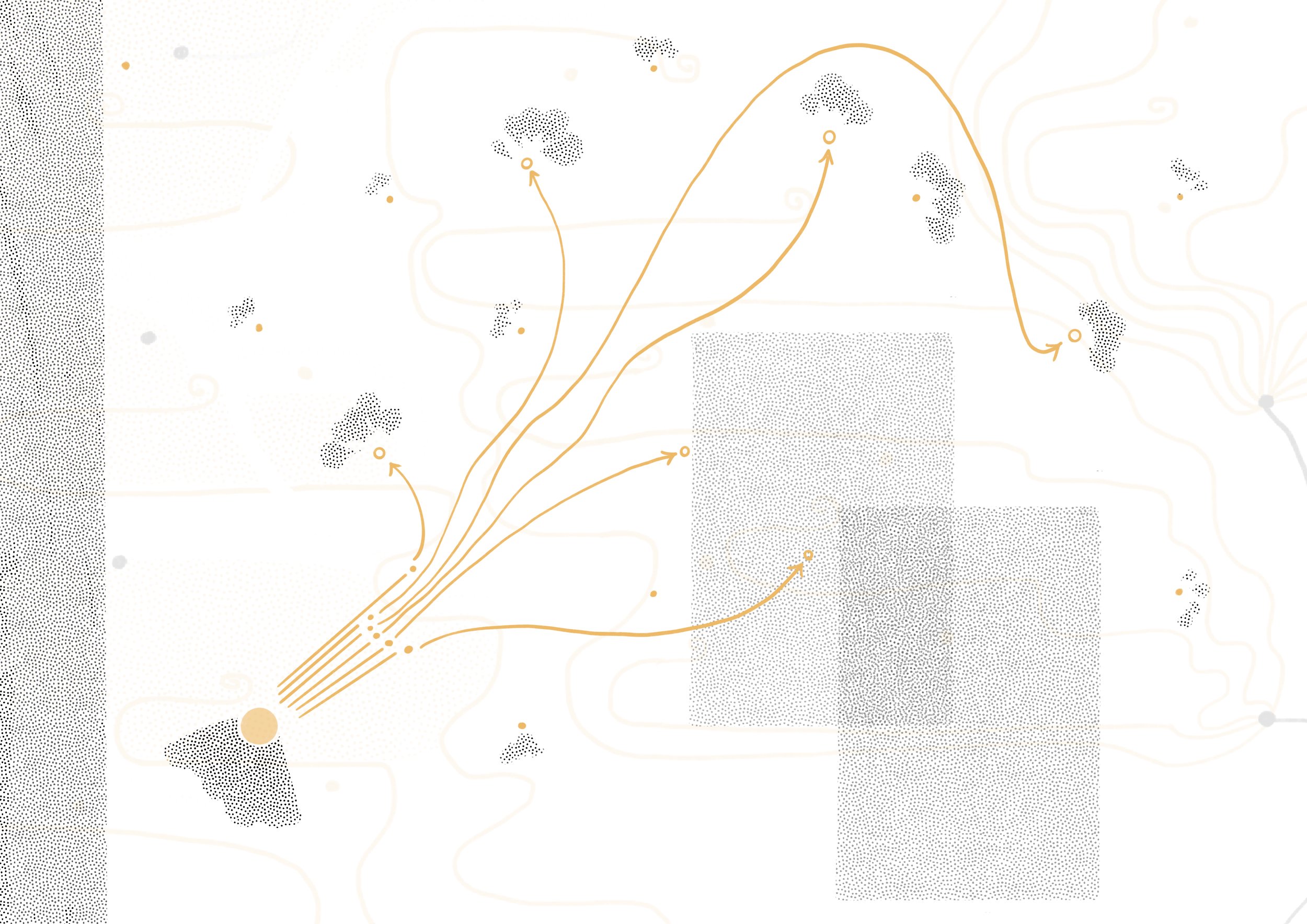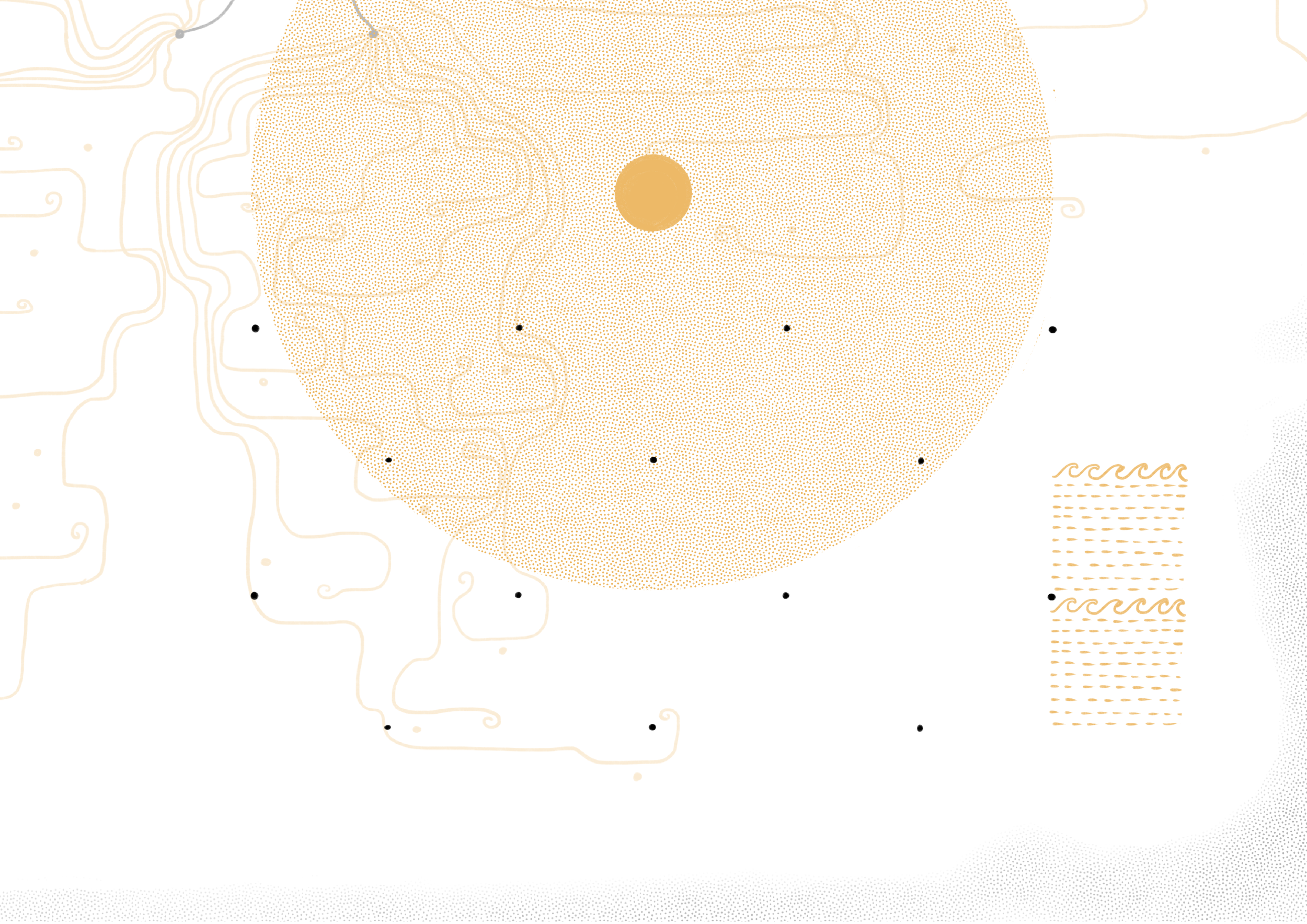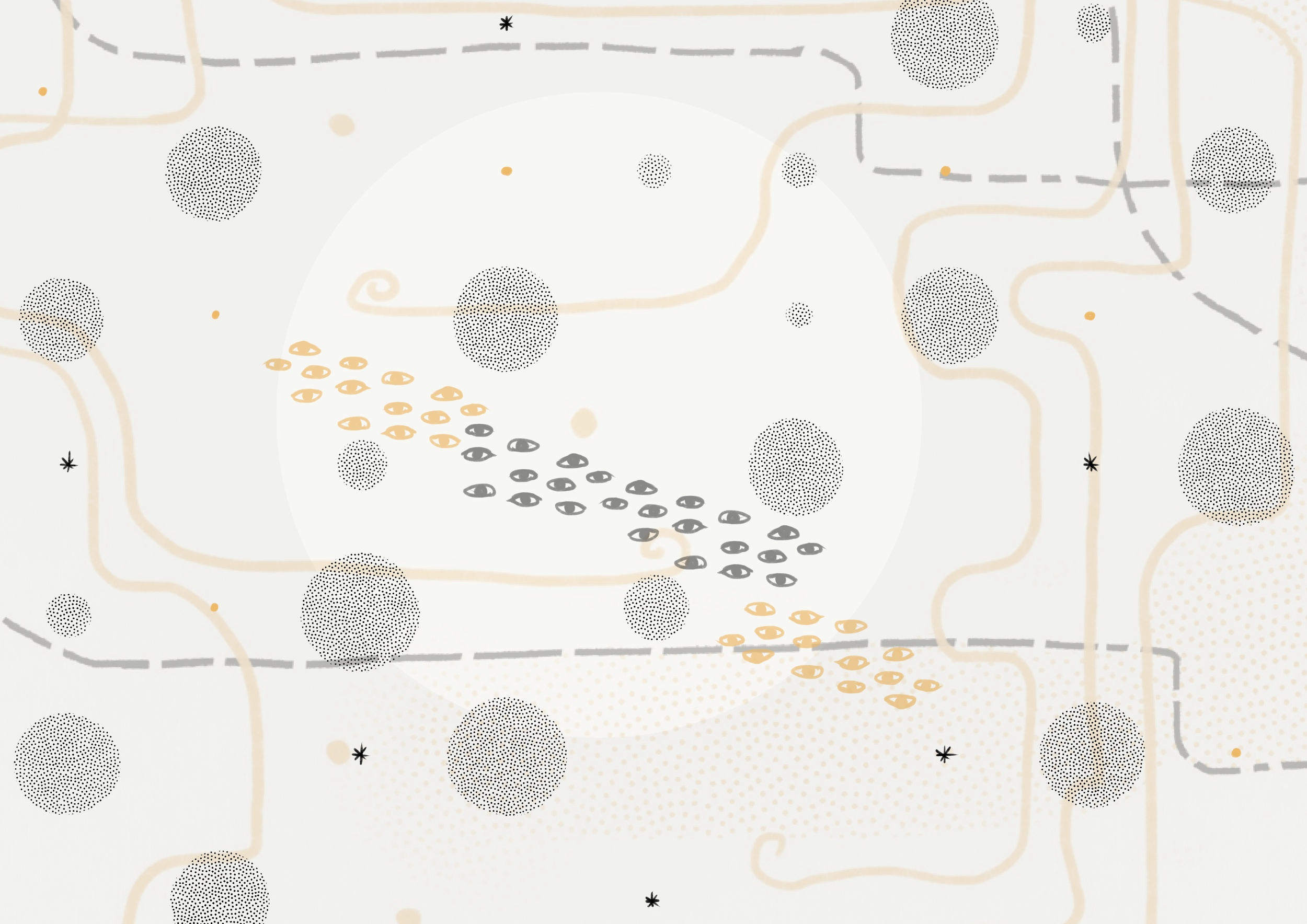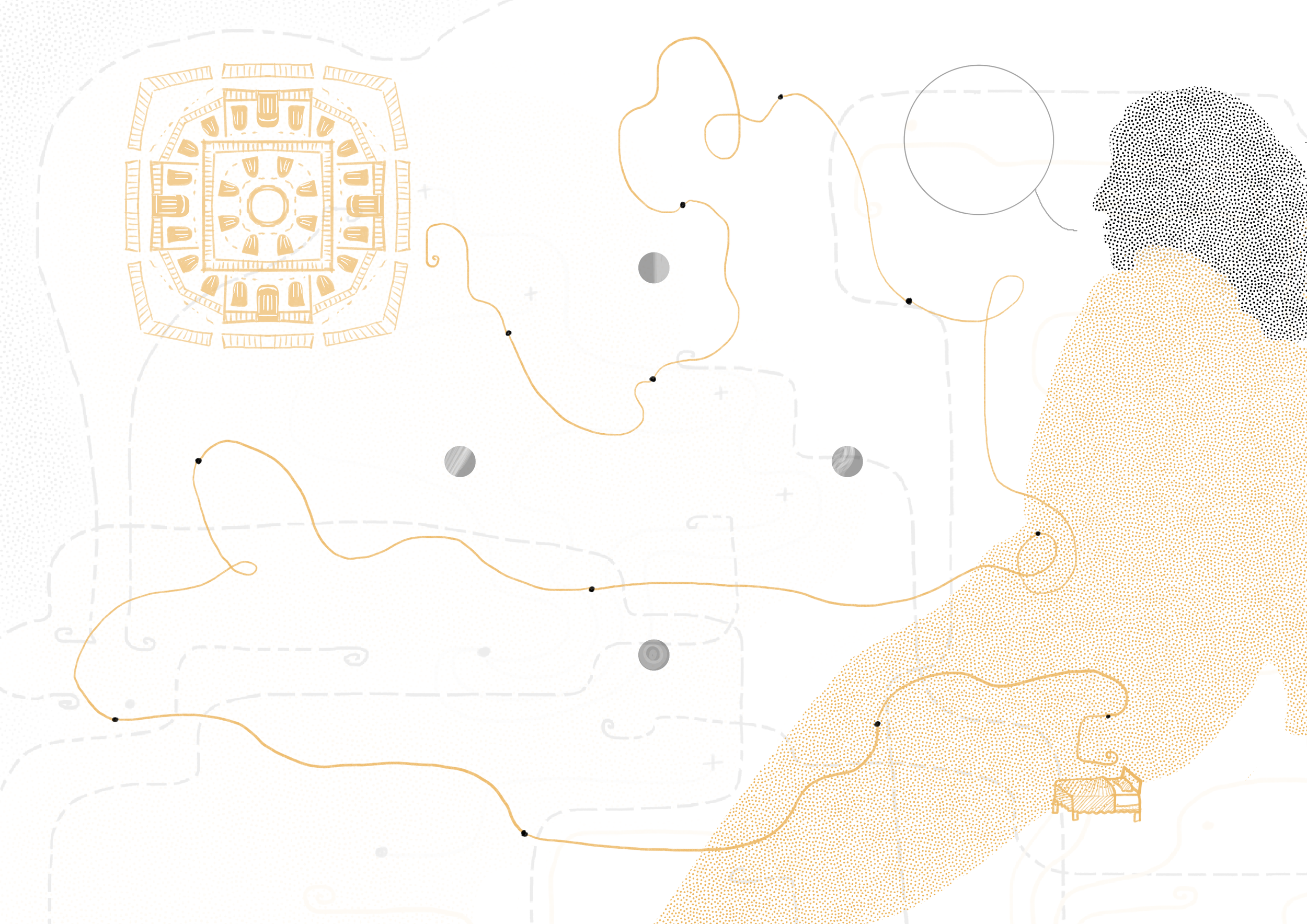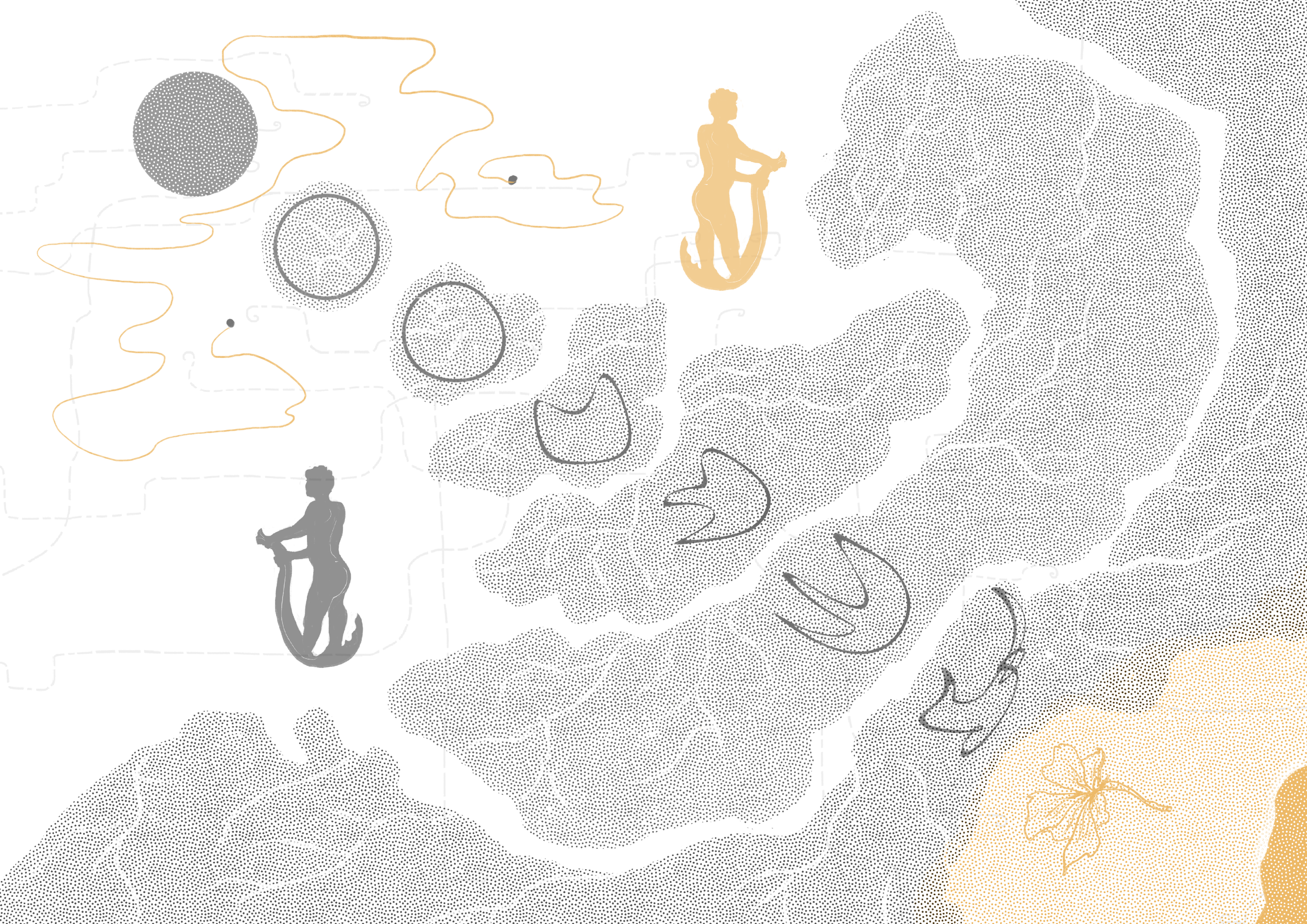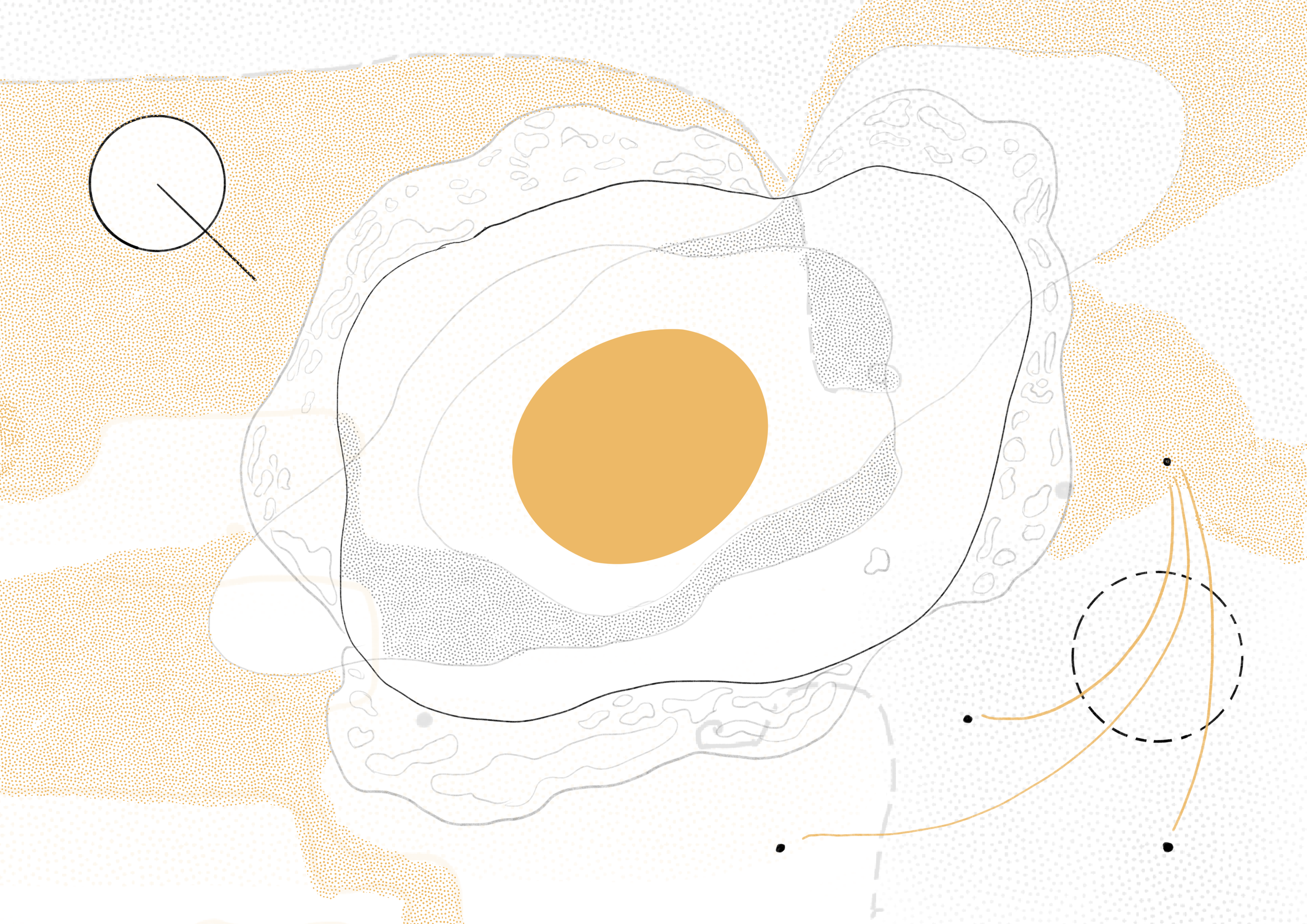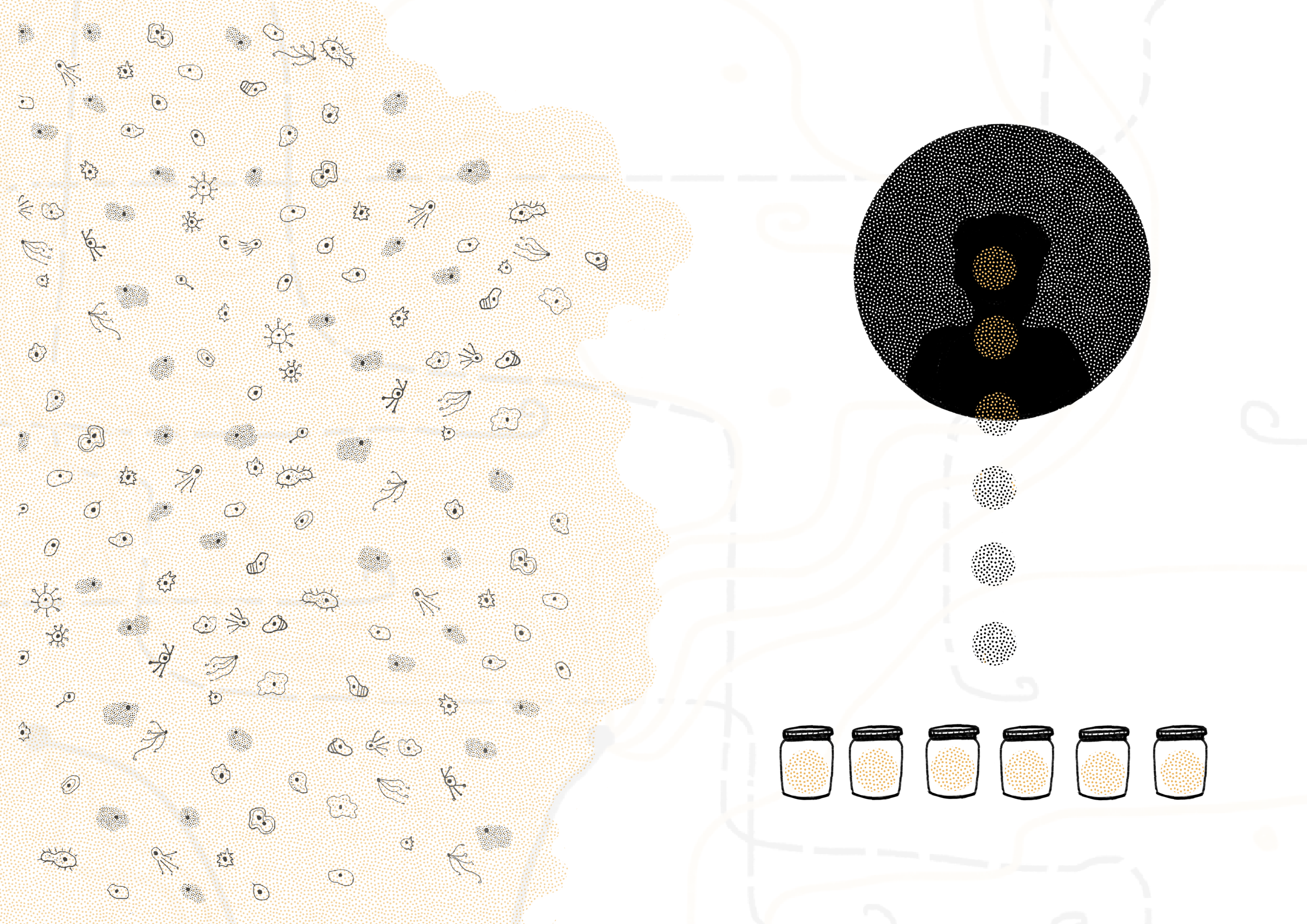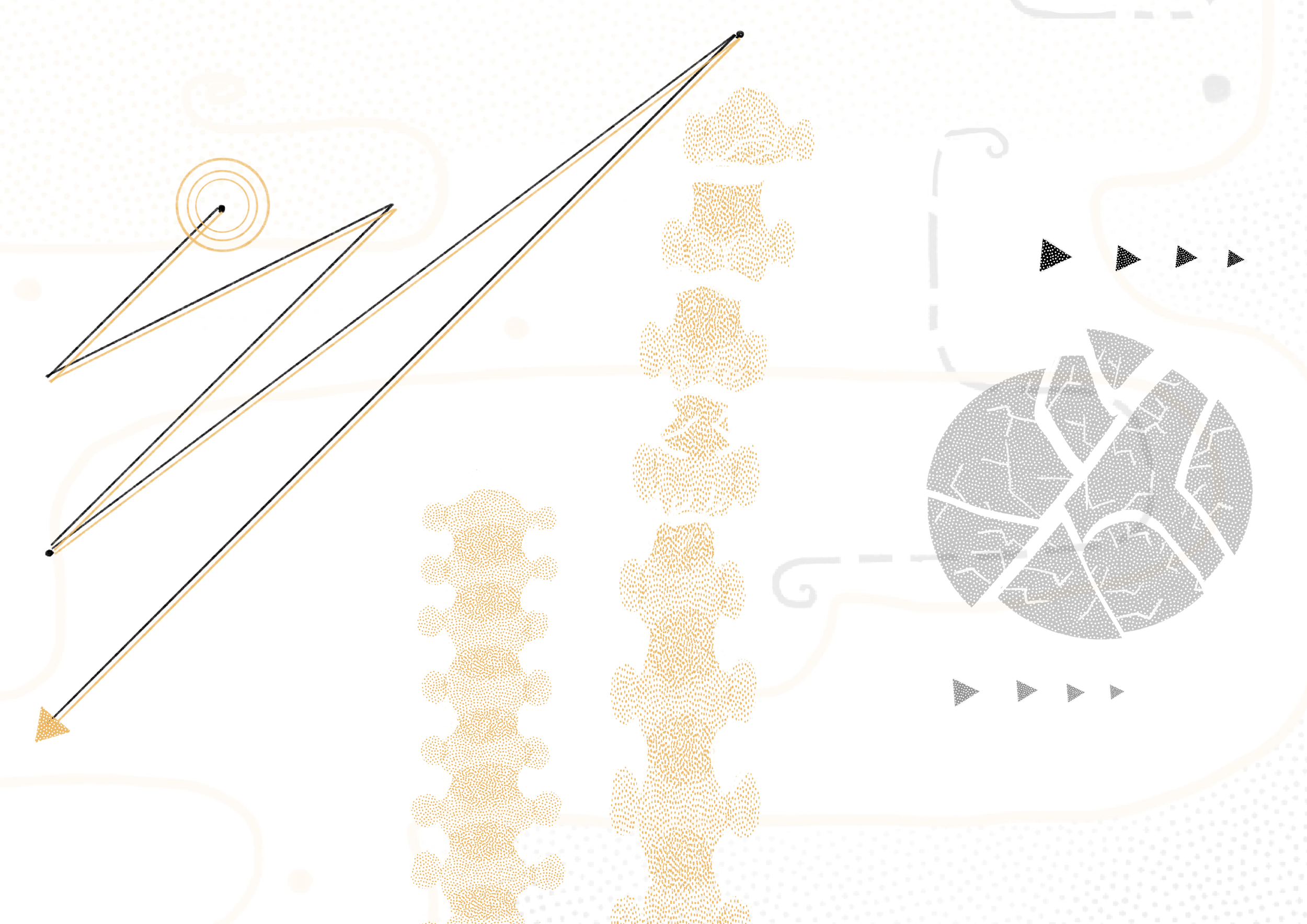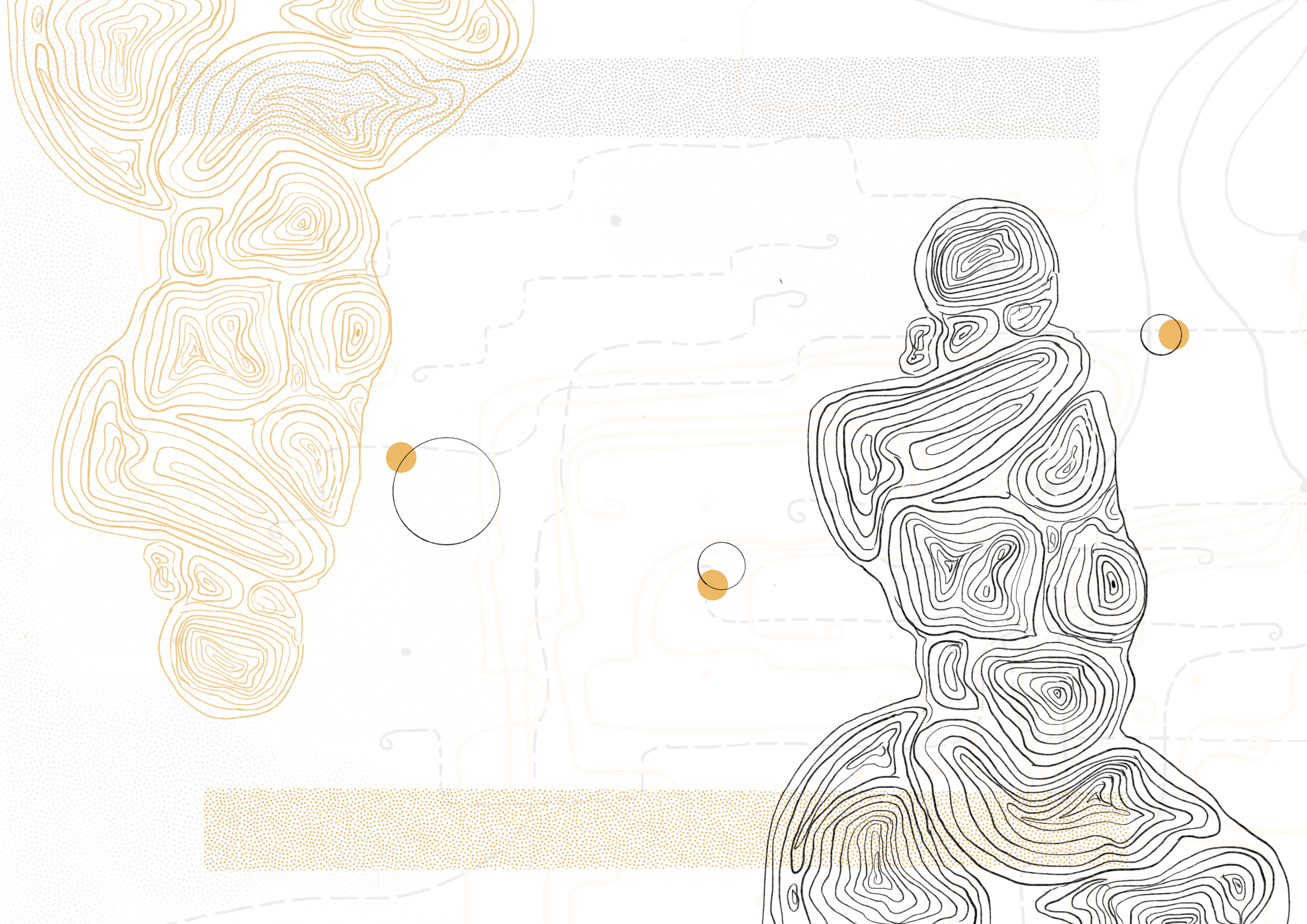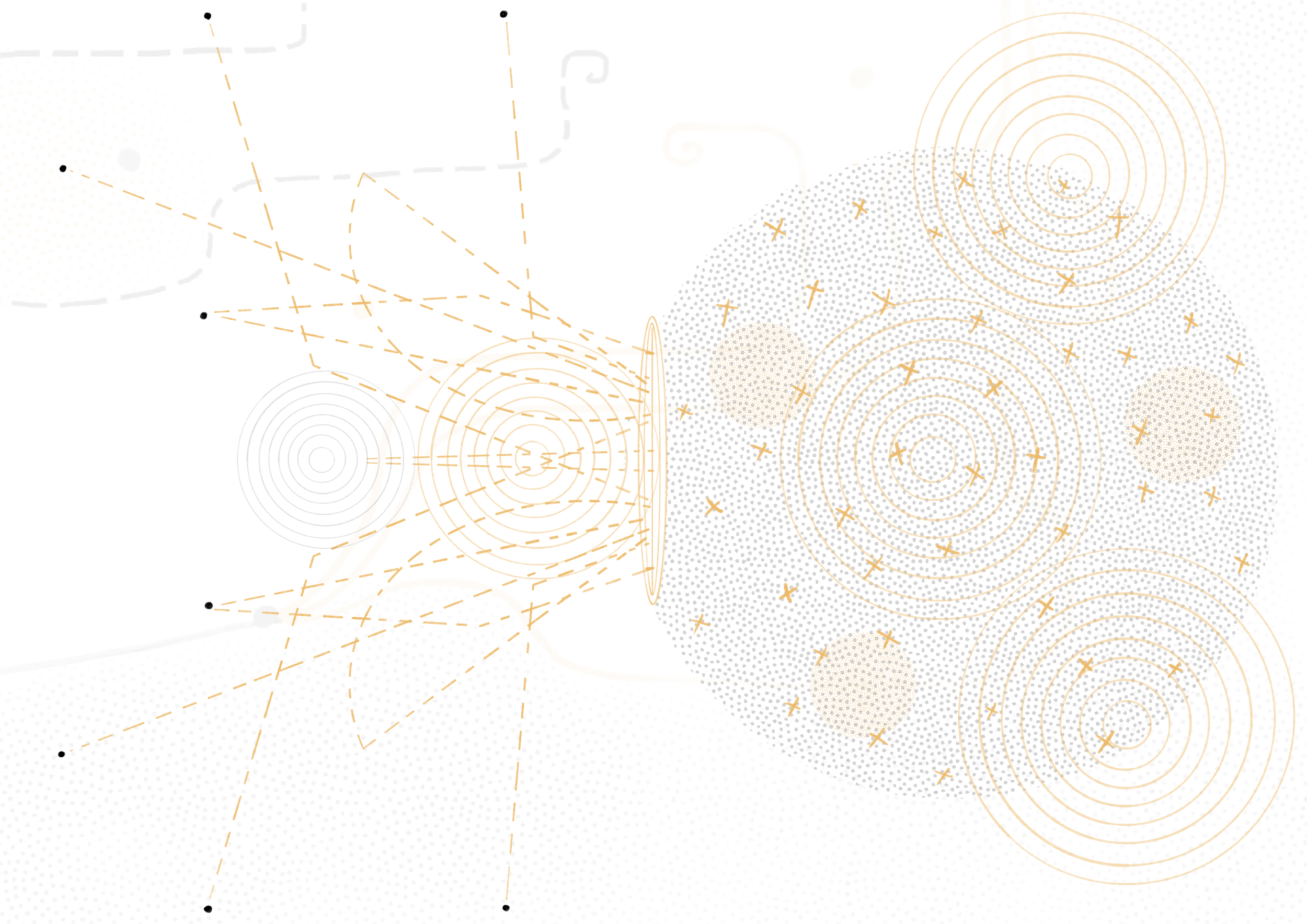Story of the Last Raas: Diba Raas
Chabungbam Babina
I
It is the last day of rehearsal. The teachers prostrate in front of the performers saying, “You have now become sakhis/brajagopis. I might have sinned by scolding you during practice, kindly forgive this ignorant servant of yours.” Their gesture, after two weeks of rehearsals for a raas performance, connotes an ultimate submission that forms part of a ritual called lai baton katpa (inviting the deities). This ritual is performed on the day before a raas performance. It is believed that the performers transcend their mundane bodies through this ritual and become embodiment of the sakhis/brajagopis. The children who are performing the role of Krishna and Radha cease to be mere performers and become personification of the deities themselves. All the performers - Krishna, Radha and the sakhis, seek the blessings of the teachers. Kheer is served at the end as everyone collectively prays for a smooth performance. The prayers however, are no guarantee to a hassle-free arrangement.
The makeshift green room is filled to the brim – about thirty performers and an equal number of costumiers crowd into the packed space. Red potlois (cylindrical skirt-like lower garment worn in raas) adorned in silver sequins are laid out in the middle. The performers carefully scan the laid-out costumes scrutinising, surveying, searching for the best before they approach the costumier of their choice. The seasoned costumiers, skilled and ready, implicitly compete with one another as they lay out their jewellery and costumes. The aunt who readied me whispered in my ears of that she had chosen the best for me. I smiled and nodded - for I knew every whisper in that frenetic room must have sounded the same.
Unfolded from its tight wrappings are red potloi(s), ready to be worn by the performers. Photo: Chabungbam Babina.
Harimati Dance and Music Centre usually organises a raas on their Foundation Day. As part of the Golden Jubilee commemoration in 2021, it was decided that a diba raas would be organised. This would be the first time in a while that a diba raas is being organised, with oja Harimati saying how much harder it is to organise a diba raas. The reason for this, she cites, is that few sutradhari (vocalists) who know the full song sequence remain. She hands over an old brochure of their 1993 Foundation Day celebration to someone who is in charge of printing the new brochure and invitation cards. The synopsis of diba raas in the 1993 brochure is to serve as a reference of what needs to be included in the write-up of the 2021 programme.
Diba raas is one of the five kinds of raas or raas leela, the dance form more commonly referred to as ‘Manipuri’ in the broader classificatory scheme of Indian classical dance. Diba raas is the newest of all the raas, having only been first played in the 1940s. Owing to this, there arose the question of whether diba raas should be incorporated in the raas pedagogy in formal dance institutions. Of the five raas (maha raas, kunja raas, basanta raas, nitya raas and diba raas), diba raas is the only raas that is performed during the day, unlike the other raas that are performed at night. There are also no specific days on which it must be held. As part of my ethnographic fieldwork for my research, I participated in the diba raas that was being organised at the Harimati Dance and Music Centre. I went with some of my friends from the Department of Dance and Music, Manipur University, who were also going to participate as sakhi/brajagopi. Diba raas was part of their BA syllabus and they wanted to get first-hand knowledge of the same before they studied it in their course. I was fortunate that dancing skills did not matter as much and I could perform with my limited knowledge of raas and Manipuri dance. This was to be my second raas. I had earlier performed in a basanta raas.
Informed by passing remarks and anecdotes, this essay is a reflection on different facets of diba raas that unfolded during the rehearsals and performance. I trace the story of diba raas within the context of developing a new pedagogical framework that began to develop in the 1950s. This process valued the ‘written text’ to transfer knowledge of the embodied form over methods that passed it on orally to learn through sustained engagement and imitation.
II
Each kind of raas has different themes, songs, dance sequences, costume and specific days to offer/perform it. The first three raas (maha raas, kunja raas, basanta raas) were introduced in later parts of eighteenth century whereas the fourth (nitya raas) was introduced in 1904. The introduction of these raas at different phases reflects the socio-religious and political climate of that particular period. The introduction of raas in the eighteenth century was influenced by the spread of Vaishnavism and meticulous use of religion in the statecraft. The fourth raas, nitya raas, was an initiative of a princess after she got married to the then British Political Agent, the very power that dethroned her father, the king, after Manipur was defeated in the Anglo-Manipur war of 1891. The year of nitya raas’ introduction coincides with the first Manipuri women’s war of 1904. These factors have called for a political interpretation of nitya raas by invoking power and agency, both of the lost kingdom as well as of women.
The last raas that became part of the raas leela tradition of Manipur is diba raas, which was introduced in 1940. What sets diba raas apart from the earlier four raas is its introduction in the backdrop of the rising anti-colonial and anti-feudal movements in Manipur. It signified the democratisation of a performance, which was otherwise bound by strict rules of religious and monarchical orthodoxy. What was once a royal spectacle had become a performance accessible to the larger public. Oja Akham Tomba is credited for the introduction of diba raas, even though there were many others who contributed in composing the songs and dance sequence. The then king Churachand Maharaj and his council of ministers, with orthodox bodies like Brahma Sabha, were strictly regulating the socio-religious activities of the people by levying various kinds of taxes and punishing those who defied the monarchical order. The rising orthodoxy was a means for the monarch to compensate for his limited power and agency under the British rule. Oja Akham Tomba was already teaching a group of people to perform a diba raas. He was summoned to the royal court immediately after the king found out about the ongoing rehearsal. He was questioned for exercising his own liberty in creating a new kind of raas without the king’s permission. Another problem was also of creating a raas that will be played during the day when all the earlier four raas were played during the night. “How can you perform and display the clandestine love play of Radha-Krishna in broad daylight?”, the king questioned. In response to this, oja Akham Tomba offered references of various literary texts of Vaishnava poets to prove that there is adequate justification to perform raas during the day. After thorough consultation with the Brahma Sabha, Maharaja Churachand gave permission and announced the introduction of another kind of raas during his reign. The then ongoing creation of bodily text of diba raas was approved only when it was adequately validated by written texts.
With the establishment of Sangeet Natak Akademi (SNA) as the apex body of performing arts in India and thereafter, the ‘recognition’ of raas or raas leela as a classical dance ‘Manipuri’, there followed a process of institutionalising and standardising both the theory and practice of raas. This included writing/producing books and framing curriculum that shaped the dance scholarship. Scholars and practitioners were occupied with proving the classicism of raas by interpreting it within the framework of the shastric tradition. Establishing the rootedness of raas in canonical texts like Natyashastra, Raas Panchadhyaya, Govinda Lilamritam, Krishna Rasa Sangraha and so on, was seen as an ultimate justification to reinforce the status of being a ‘classical’ dance. Hence, any innovative dance sequence or any kind of additions to be made necessarily had to be based on a written text. This ‘recognition’ was coupled with the establishment of Manipur Dance College in April 1954. The lack of explanation and rationale to set up Manipur Dance College (Cherian, 2009, 41) as a unit of SNA was filled by what Anita Cherian also describes as a form of ‘cultural recognition’ in reinforcing a pan-Indianist ideology. The name of the college later changed to Jawaharlal Nehru Manipuri Dance Academy (JNMDA) in 1964, to acknowledge the inspiration and initial fund of Rs 12,000 that the then Prime Minister of India, Jawaharlal Nehru, contributed to start the dance academy. Nehru’s vision and interest were sparked during his 1952 visit to Manipur where he witnessed a raas performance at the invitation of the king. While discussing the name of the institution, two other names that came up were of Maharaja Bheigyachandra, who is credited with the introduction of raas in the eighteenth century. The other name was of Rabindranath Tagore, who understood the delicate beauty of the form and incorporated Manipuri dance into the curriculum at Shantiniketan.
What remains relatively unknown is the establishment of another dance institution, Govindaji Nartanalaya (now the Government Dance College under Art and Culture Department, Government of Manipur) in November, 1954, with the initiative of Maharaja Bodhachandra and Maharani Patpan Sanghai. Maharaja Bodhachandra was the king who signed the merger agreement of Manipur with the Indian union in 1949. He was also the one who invited Nehru to watch raas at the royal temple during the latter’s maiden visit to Manipur (Singh & Singh, 1967, 667).
Costumier readying a girl for a raas performance. Photo: Chabungbam Babina.
The classical ‘recognition’ and new academies called for a new pedagogy different from that of the guru-shishya parampara. One of the pioneers of Manipuri dance, Guru Maisnam Amubi, wrote a book of chali pareng, a sequence of 27 dance units, to be used in the formative part of learning Manipuri dance. Another book he authored is a compilation of the song sequence of four kinds of raas to be used as a reference for the newly crafted syllabus. ‘Fixing’ the form and its content was a challenge and it continues till today. The chali pareng and raas taught at the JNMDA and Government Dance College have significant differences. Like much of the narrative of Manipuri dance, the raas sequence, chali sequence and dance movements of Guru Amubi’s style i.e., the JNMDA style, is predominant and often taken as the ‘right’ one. Even though the teaching of raas in dance institutions tends to have a fixed sequence incorporated in the syllabus, there are variations and deviations from the ‘fixed’ when raas is performed at various places. The book on raas by Guru Maisnam Amubi was a compilation of only four kinds of raas. Diba raas was not originally a part of the raas syllabus, both at JNMDA and Government Dance College. It was incorporated much later, both in the syllabus, and in the larger ambit of raas or classical Manipuri dance. The publication of books on raas and chali pareng were the beginning of codification through selective transference of a cultural knowledge encoded in the dancer’s body to a body of written texts.
Despite not being a part of the formal syllabus till the 80s, diba raas remained popular among the Meitei vaishnavite population. Diba raas could be performed during the day and was not bound by any specific day to offer/perform it. This meant that no lighting and other elaborate arrangements were needed which made it easier for people to organise a diba raas. Hence, it was frequently performed. It was the preferred raas during the second world war when Imphal was heavily bombed since its performance would get over before sunset. In spite of its popularity, it took years of effort to incorporate diba raas within the institutional syllabus and hence within the fold of Manipuri. It maintained its widespread popularity in local temples at various places as a ‘folk’ performance, blurring the rigid categorization of ‘classical’ and ‘folk’ in the context of Manipuri. Diba raas was gradually incorporated in the syllabus starting from the early 80s onwards, though its pedagogy was mostly restricted to oral teaching and memorised body movements. This unfixed model based on a fluid pedagogical system remained in place until two books on diba raas were published in 1993. The two books were Diba Raas by Kshetrimayum Thouranishabi Devi (who taught at JNMDA) and Niti Leela Diba Raas by Ngangom Bhanumati Devi.
Both these books in their preface sought to highlight the role they played in filling the huge gap in the raas syllabus. The publication of these books and codification of diba raas in a written and fixed version strengthened its case to be incorporated as a distinct raas along with the four earlier raas. Following their publication, JNMDA adopted Thouranishabi Devi’s text whereas the Government Dance College started using Bhanumati Devi’s. This furthered the differentiation between JNMDA and Government Dance College which had already been present since their establishment in 1954. Are the texts different? Yes, to a certain extent but not thematically so. Both Thouranishabi Devi and Bhanumati Devi had learnt diba raas from oja Akham Tomba, the teacher who is credited with the introduction of diba raas. The original songs sequence of oja Akham Tomba’s diba raas were in Bengali and Brajaboli. Thouranishabi Devi and Bhanumati Devi translated the songs into Manipuri according to their own interpretations. As referred to earlier, JNMDA’s tradition is predominant to the extent that their style is often claimed as the right one. Following this, Thouranishabi Devi’s text has served as the commonly referenced text, even in performances that happen today at various local temples and sites including the one I performed in. This story speaks of shifts in the sites of cultural memory, from the dancers’ bodies to texts, and the manner in which these texts have developed. The codification involved has also been coterminous with the decreasing popularity of diba raas, with very few performers left to carry forward this rich legacy.
III
Diva or diba, in its colloquial pronunciation, translates into day and hence the connotation of diba raas as a raas that is played during day-time. Diba raas enacts the story of Krishna’s play with Radha, Ananga Manjuri and gopis while attending to his cows. The performance that I took part in was on a wintry evening in December at a temporarily built mandali (performance space) at oja Harimati’s courtyard. The sun had set early and it was already dark when the performance began that evening. The basic essence of diba raas was compromised, given the situation. The performance’s completion before dusk was crucial because of what it represents, the context in which it was initially introduced, and the reasons for its popularity (as discussed earlier). Deviation from tenets such as this is a testimony to many other departures from the ideal rules of raas, both prescribed by rituals, as well as the codified syllabus.
Ideally, the performers are supposed to learn the full dance and be aware of what is included in the three-hour long performance. In practice though, the artist who teaches and plays the percussion, raasdhari, and the vocalists, sutradhari were still discussing what to add and what to take out even when the performance day was nearing. They would quickly fix the number of repetitions of certain pada they wanted to elongate and cut down the dance sequences of a song to reduce the length of the performance. The two sutradhari sat in the corner during rehearsals with an old copy of the book Diba Raas by Thouranishabi Devi for reference. They kept going back to the book not only when they forgot something but also to cross-check whatever the raasdhari advised them to do. They were quick to point out if any instruction did not match what was written in the book. As for the participants, most of us were more or less clueless. We did copy a couple of padas that we found intriguing. Slight cluelessness still persisted during the actual performance, except for the song sequences which we had copied and memorised. The rehearsals leading up to this diba raas performance was confined to learning only some important sequences like bhangi and mapop. More time was invested in teaching those playing Krishna, Radha, makokchingbi (lead dancer), and mathang chatpi (second lead dancer). Each of them was taught solo dance sequences whereas bhangi and mapop ( crucial dance sequences where Krishna, Radha, Ananga-manjuri and the gopis dance together) were taught to all the participants. We got a sense of the whole performance only while performing on the actual day. Unlike usual rehearsals that span one to three months, we had to squeeze in whatever we could learn in a week or so. Therefore, a professional raas performer was entrusted with singing, dancing, and ensuring the smooth progression of the performance. Guided by a faint idea of what we had learnt, we followed the professional performer who danced among us as a gopi.
A girl playing Radha rides on her father’s back on her way to the performance space. Photo: Chabungbam Babina.
Even though she guides the dance sequences when the participants dance in a group, the solo dance sequences were our individual responsibility. This explains why more time was invested in teaching solo dance sequences. There is, however, an additional reason to this. Out of the total expenditure, the maximum amount of money is contributed by those who take the main roles of Krishna, Radha, makok chingbi, mathang chatpi, and in this case by Ananga-manjuri as well. These characters are entitled to a solo sequence because of what the story demands as well as to compensate their higher financial contribution. In fact, one decides to play the main roles if they are able to sponsor the required sum. My friends from the Department of Dance and Music, Manipur University, were negotiating participation and costume charges with oja Harimati. “Oja, you can take more from the ones playing the main roles because they are well off,” said one of them while trying to convince oja Harimati to charge them less. The participants send invites to their relatives or close ones, who are then supposed to come with gifts (money). The invitees then come with garland of currency notes of varying denomination. While the ideal intention of participation is defined by religious devotion, the reality is often marked by one’s social and economic status. The number of garlands is proportional to the participant’s kinship and social network. It matters as much as one’s beautiful rendition of the dances. The mandali (performance space) is a space to flaunt much more than just the spectacle of exquisite ritual performance.
The main roles of Krishna and Radha are played by pre-pubescent children. Ananga-manjuri is also preferably played by a child. In exceptional cases, a woman can also take the role. For this particular diba raas, a child actor who had featured in many local video albums and films was hired by the organisers for the role. Ananga-manjuri is a special character that appears only in the diba raas. She is believed to be either Radha’s elder or younger sister. She stands to the right of Krishna while Radha stands on the left in their collective divine pose. There are different myths associated with the identity of Ananga-manjuri. A popular version conveyed through Diba raas is that one can achieve Radha-Krishna only when they are able to devote themselves like Ananga-manjuri. Another version believes that Ananga-manjuri is Balram (Krishna’s elder brother) in disguise. Another myth explains that no other male is allowed to take part in raas except for Krishna who is the supreme male. Lord Shiva was also not allowed to participate in raas and was instead given the responsibility to guard the entrance. At Shiva’s insistence, Krishna allowed him to hide in the hair knots on the heads of the gopis. It is now symbolised by the conical headgear that gopis wear on their head. Likewise, when Balram persisted in his demand to take part in raas, Krishna finally disguised him as Ananga-manjuri and let him attend the raas. Ananga breaks into an-anga meaning ‘without the body’ or ‘a body within a body’ signifying the bodiless body of Balram in the guise of Ananga-manjuri. The songs describe Ananga-manjuri as a woman of utmost beauty with a milky complexion who shines like a gold-and-green jewel. The mother of the girl playing Ananga-manjuri took pride in watching her daughter, whose dance enthralled the audience. When her mother was told about the amount she had to contribute for the costume, she was worried that it could add yet another financial burden. She had mistaken the invitation by the organiser for the paid work that her daughter often gets offered. But for the girl, the only thing that concerned her was that she had not memorised her dance steps yet. On the day of performance, she glided softly in her little potloi (cylindrical skirt-like lower garment worn in raas). She charmed the audience with perfectly measured movements of her hand, neck and eyes, a smile plastered on her face. It is desired that one dance well, but the participants were reminded that dancing well was not the most important thing. “No matter how good a dancer you are, what matters is sincere devotion towards ebungo-ebemma (Krishna-Radha), and not your refined dance steps,” oja raasdhari would often say. Once during rehearsals, I complemented the beautiful rendering of the solo piece by the girl playing Ananga-manjuri and asked what role she was taking. She said, “I am not sure but I think it is Ananda manjuri or something.” Knowing about the role she was taking, or the slight different between ‘d’ and ‘g’ did not matter as much as her performance. For her, it was more important that the audience enjoy her dance and praise her dancing talent. The ideal devotional essence of raas takes a back seat yet again.
In its pristine sense, raas symbolises devotion. It was an offering by King Bheigyachandra to his Lord Govindaji, who the king believed helped in restoring his status as king after frequent invasions and war with the neighbouring Burmese kingdom. In the songs of maha raas, basanta raas, kunja raas and nitya raas, there are mentions of Bheigyachandra, the creator, suggesting that raas is an offering of the king to his lord. Mentions of the king in the song sequences are also a stamp of his authorship of the creative and political landscape of the raas, by virtue of him being the king. In place of Bheigyachandra, the songs of diba raas mention Narottam Das, the 16th century poet of Gaudiya Vaishnavism. A section of the song goes as, “Nanai Narottam na pamjaba ras ni, shri Radha Krishna gi leela rasa chupchabani” (I savour the rasa of Radha-Krishna’s play, it is something your servant Narottam cherishes). These songs valourise Narottam Das’ devotion while simultaneously crediting him for his poetic compositions. Diba raas was created based on the poems written by Narottam Das. The political power of creating a raas that initially rested with the king or royal authority (as in case of other four raas) was challenged by oja Akham Tomba by introducing diba raas. The larger public were able to lay claim to a raas outside the royal boundaries. Having said this, anyone outside of royalty was entitled only to limited agency. This is seen when oja Akham Tomba had to seek the permission of the then king to finalise the performance. Though the creator of the poems, Narottam Das, finds mention in the songs, oja Akham Tomba’s name has been rendered absent in the songs of diba raas.
What was/is conceived of as devotion or the bodily manifestation of it has surpassed its ideal meanings. It leaves ample space for people to find interpretations that suit their purpose. If the other end is defined strictly by religious and ritual hues, then there is also pure joy of taking part in it just to wear the potloi (costume) and take photographs for social media. “Stop your mischief or else I will not let you wear the potloi,” oja Harimati jokingly warned the children who were playfully running around the courtyard. There is a thrill that parents have when their children take part in raas. There is a popular saying that the parents sway their bodies in the same way their children do while dancing. In such cases, it does not matter which raas (out of five kinds) their children take part in. The meanings of all the raas remains more or less the same, making room for fluidity and improvisation. The pedagogical formalisation of raas, with a tendency to ‘fix’, reduces raas to a singular meaning. For students of Manipuri dance, raas and its textual representations have immense importance in discerning the history and politics of culture, whereas for an ordinary person, raas embodies multiple meanings. There is beauty, the charm of wearing the potloi with sparkling kinar, an offering through dancing, as well as an acknowledgement of one’s social status. For many, it does not matter what raas is being performed. There is a simple joy in being able to witness it, with their own meanings and perceptions. Diba raas was the last addition to the existing raas leela tradition. For long it was the only raas that catered to the emotional and sensory needs of ordinary people whereas the other four raas’ were confined within the bounds of royalty.
I entered as a researcher, careful not to lose sight of the text and context. I had little to do with devotion or any other religious aspect. Yet I cannot deny an overwhelming ecstasy, whose source could be religious or otherwise. As the audience and performers gathered at the end for aarti, I remember secretly making a wish. When the time comes to translate the visuals and conversations into words, many appear as fragmented pieces, haphazardly placed while trying to find a connecting thread just like the bits and pieces this essay holds on to. I am yet to conclude what raas means to me. A single sight is capable of taking off on different tangents, be it the ritual specificities, the history, the sartorial elegance, or the intricate details of the dance movements. I do know one thing though. In surrendering my body to the field, I slowly became a part of the spectacle I was/am supposed to observe.
*The visuals are from raas at different locations and not from the particular raas that the essay talks about.
References:
Cherian, Anita. 2009. “Institutional Manoeuvres, Nationalizing Performance, Delineating Genre: Reading Sangeet Natak Akademi’s Reports 1953-1959” Third Frame: Literature Culture and Society, Vol. 2, No. 3, July-September, pp. 32-60.
Devi, NgangomBhanumati. 1993. Niti Leela Diba Raas. Imphal: Nongmaithem Kirankumar
Devi, Thouranishabi. 1993. Diba Raas. Imphal: Author
Singh, Lairenmayum Ibungohal, and Singh, Ningthoukhongjam Khelchandra. 2015, 1967 Cheitharol Kumbaba, Imphal: Manipur Sahitya Parishad.
Hdma Imphal (2022, April 23). DIVA RAAS/ GOLDEN JUBILEE of Harimati Dance & Music Centre, Imphal-First Day (Part-B) https://youtu.be/V0vkoaoBaws (YouTube links of an edited video of Diba raas that the essay talks about).
Chabungbam Babina is a student of Manipuri dance who is intrigued by the idea of dance as embodied knowledge and of dancer’s bodies as archives. She is also a doctoral candidate at the Centre for the Study of Social Systems, JNU, New Delhi where she engages with performance traditions of Manipur through dance and visual ethnography.
